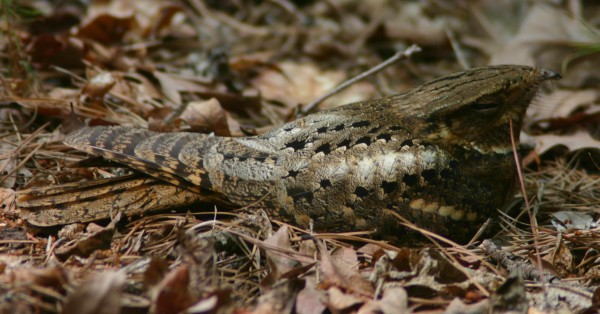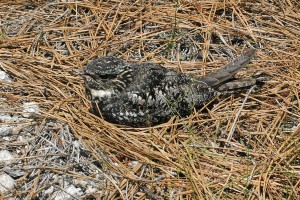United States Nightjar Survey Network expands
Tracking migrant eagles to the Chesapeake Bay
October 15, 2008CCB Bulletin to Birders: Request for assistance in locating marked birds
October 18, 2008
Written by Michael Wilson
October 17, 2008
Nightjars are a group of nocturnal, insectivorous birds that include species such as the whip-poor-will, chuck-will’s-widow, common poorwill, and common nighthawk among others. In recent years, the ornithological community has become increasingly concerned that populations of nightjars in North America may be declining. Because of their nocturnal habits, there has been no monitoring program to accurately identify or refute these concerns. CCB launched the United States Nightjar Survey Network to improve the general understanding on the status of nightjar populations across the nation. Over time, we envision that this program will help to determine the precise scale and magnitude of population change, as well as how the composition of habitats in local regions influence nightjar abundance.

Chuck-will’s widow, Gloucester, VA. Photo by Teta Kain.
The Nightjar Survey Network was introduced to the southeast region in the spring of 2007, then expanded in 2008 to extend network coverage throughout the contiguous United States. The Network relies on volunteers to adopt and conduct nightjar survey routes on an annual basis. Volunteers survey their routes one time per year by driving along a 9-mile route and stopping at ten pre-determined points to count all nightjar species heard or seen. Because nightjar calling and foraging activity is positively influenced by moonlight, we instruct volunteers to survey routes only during periods when the moon is more than half-full. This design allows us to gather more reliable data when cues for their detection are highest and most consistent.

Nightjar Network survey route in Dragoon, AZ. Photo by Janine McCabe.
In addition to gathering nightjar count data, we also examine the physical setting along routes to gain a better understanding of how the composition of habitats in the landscape influences nightjar abundance. Establishing the link between habitats and nightjar species will help explain how populations are affected by changes in land use. In the program’s short tenure, we have also observed situations where population levels deviate from that expected based on good habitat availability. These results can catalyze new research into examining threats that are not related to habitat.
The Nightjar Survey Network has successfully brought conservation minded citizens, birders, and professional biologists together with the collective goal of gathering information to aid conservation of this eclectic group of species. Over the past two years, volunteers have collected data on 351 routes and counted 1,335 chuck-will’s-widows, 623 whip-poor-wills, 199 common nighthawks, 93 common poorwills, 31 lesser nighthawks, and 16 common pauraques.

Common nighthawk nestled in pine needles, Carolina sandhills, SC. Photo by Doug Deneve.
The success of this program relies entirely on continued volunteer participation. We are extremely grateful to the dedicated people who are making a difference by counting nightjars during some of the most unusual hours of the night ever attempted for a national bird monitoring project. In addition to adopting a route, you can help by letting others know about the Nightjar Survey Network. The pamphlet below can be downloaded for printing or forwarding to members of local birding groups.



